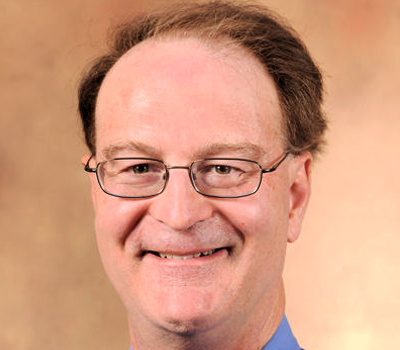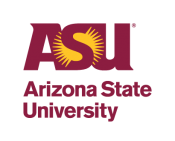Work for microorganisms so they do the work for us
When you consider microorganisms, your first thought may not be health benefits or sustainable energy. However, Dr. Bruce Rittmann, of Arizona State University, is focused on using these microscopic living organisms for just that. As one of the world's most highly cited researchers, with more than 500 peer-reviewed papers, Dr. Rittmann works to understand and manage microbial communities so that they can provide us with invaluable services such as cleaning up pollution, producing renewable resources, and improving our health. By partnering with microorganisms, he and his team are able to take advantage of their special metabolic capabilities. Dr. Rittman explains, by thinking like microorganisms, he and his team are able to, "work for the microorganisms so that they work for us," thereby improving environmental quality, society's sustainability, and human health.
To understand the microbial communities, Dr. Rittmann and his team use an amazing set of skills from a multitude of disciplines, including chemical, environmental, and electrical engineering; microbiology, biochemistry, and ecology; biogeochemisty; organic and inorganic chemistry; mathematical modeling; medicine; and materials science. Due to the extraordinarily multidisciplinary nature of such work, Dr. Rittmann's research requires the formation of trans-disciplinary teams within the Swette Center for Environmental Biotechnology and around the world. This unique approach, which harnesses the potential of microorganisms to provide services that make human society more sustainable, is likely to make a large impact on our society. From the fundamental investigations to the in-field applications, Dr. Rittmann's leadership has guided his team towards solving important problems and creating opportunities for society!
Current projects include:
-
Pollution: When handled improperly, the large confined animal feedlots becomes a pollution problem. Dr. Rittmann is hoping to transform such liabilities of waste materials to capture the resources within them. By transforming waste to resource, Dr. Rittman hopes to capitalize on the incredible amount of energy available and to assist agriculturalists with renewable fertilizer.
-
Renewable Energy: Dr. Rittmann is hoping to use the sun to create renewable energy sources. Using photosynthetic microorganisms, Dr. Rittmann is able to capture and convert carbon dioxide into valuable products. Therefore, instead of relying on fossil fuels, Dr. Rittmann hopes to use photosynthesis to create a major chemical energy.
- Human Health: Swette Center researchers are among the leaders in applying the concepts and tools environmental biotechnology to the microorganisms in human intestines. Dr. Rittmann is studying the relationships between the microbial communities that inhabit our intestines and good or bad health outcomes. Current work addresses autism and the impacts of bariatric surgery as a means to overcome obesity.
Bio
Dr. Bruce Rittmann is the director of the Swette Center for Environmental Biotechnology at the Biodesign Institute at Arizona State University and is also a Regents' Professor in the School of Sustainable Engineering and Built Environment. An international leader in managing microbial communities, Dr. Rittmann works to find new ways to clean up pollution, treat water and wastewater, capture renewable energy, and improve human health. According to Institute for Scientific Information, Dr. Rittmann is one of the world's most highly cited researchers. He has published more than 500 peer-reviewed papers. Prior to his time at ASU, Dr. Rittmann was a John Evans Professor of Environmental Engineering at Northwestern University and a professor in the Department of Civil Engineering at the University of Illinois at Urbana-Champaign. He began his career as an environmental engineer at Sverdrup and Parcell and Associates.
Dr. Rittmann has always enjoyed the exciting parts of research that involve discovering new things about the way our world works and how humans interact with it. In addition, partnering to improve the sustainability of human society is very motivating to him. Dr. Rittmann and his team partner with microorganisms to take advantage of their special metabolic capabilities. By understanding what microorganisms do and what they need to do it, Dr. Rittmann hopes to improve environmental quality, society's sustainability, and human health.
In his free time, aside from research, Dr. Rittmann enjoys playing the trumpet and attending symphonies and operas with his wife. In addition, his personal fitness is very important to him, and his research has helped him shape his diet and activity choices.
Website: environmentalbiotechnology.org/
In the News
Publications
Videos
Awards
BioCluster Award, International Water Association and International Society for Microbial Ecology, 2014
Joan Hodges Queneau Palladium Medal, American Association of Engineering Societies (AAES), 2014
Distinguished Member, American Society of Civil Engineers (ASCE), 2012
Simon A. Freese Award and Lecture, American Society of Civil Engineers, 2009
Member, National Academy of Engineering, 2004
Patents
U.S. Patent No. 6,808,879: "Means for Qualitative and Quantitative Analysis of Microbial Populations Present in a Sample."
Awarded as European Patent 98952692.6-2116, April 4, 2000. U.S.A., October 26, 2004. Applied for in Mexico, Australia, Canada, and Japan.
U.S. Patent No. 6,387,262: "Hollow-Fiber Membrane Biofilm Reactor for Autohydrogenotrophic Treatment of Water."
Awarded May 14, 2002.
U.S. Patent No. 7,186,340: "Perchlorate Reduction and Related Water Treatment Methods."
Awarded March 6, 2007.
U.S. Patent No. 7,338,597: "Apparatus for Water Treatment."
Awarded March 4, 2008.
U.S. Patent No. 7,491,331: "Methods and Systems for Total Nitrogen Removal."
Awarded in U.S.A. February 17, 2009. Mexican patent no. 268620 (July 23, 2009), and P.C.I. patent filed.


